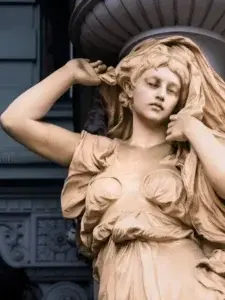Bachelors in Fine Arts is a major degree that is very significant these days. This course allows students to acquire skills in several art forms. A BFA degree looks at practical training and creativity. Students get lessons in visual arts like painting and sculpture. In addition, they explore expressions of art and do critical thinking.
Besides this, the BFA experience is self-nurturing growth and self-discovery concurrently. The students themselves, in the process, become more confident in the skills they have. As a result, they are in a leading position in the tough job world. On the whole, this course guarantees not only worthwhile experiences but also knowledge. Consequently, it establishes the foundation for a career in the arts.
What is BFA Degree?
A BA fine arts degree is designed for the creative sector. It is devoted to subjects that are both creativity-based as well as theoretical. The student’s LLC courses are characterized by painting, photography, and graphic design.
Distinction between BFA and BA Fine Arts
This BFA is the opposite of a BA in Fine Arts in many ways. A BFA is more about laboratory activity and studio practice, while a BA is more about a study program. Consequently, BFA students are involved in art more frequently.
Importance of Choosing a Degree in Fine Arts
Having a degree in fine arts is the first step for oncoming artists. It offers the development of necessary skills and an in-depth knowledge of art. Major subjects include art history, the art of notable painters, and research in different mediums. In addition, through this, they carve a niche for themselves in the art world, which is necessary for their success. Also, the program opens up networking possibilities with professionals in the industry. Consequently, they are more competitive in the labor market.
Benefits of a Bachelor of Fine Arts Degree
Career opportunities with a BFA degree
Earning a degree of Bachelors of Fine Arts, graduates of various disciplines can acquire talented careers in fields such as education. That is, they can be artists, designers or educators. This degree also encourages students to connect to a professional network. Many schools have internship programs. Thus, learners obtain a lot of practice in college.
Skill development in a BFA Fine Arts
Studying for a BFA degree does enhance the critical skills needed. Students learn techniques in various art forms, and they also learn to think creatively. In addition to powerful technical skills, they master critical analysis. This knowledge lets them think about art and how it affects people. Therefore, these skills are key in a lot of careers.
Personal Growth and Artistic Expression
A Bachelors in Fine Arts (BFA) also helps you grow up personally besides your professional education. More Than that, this BFA is also made by self-reflection. As students make work, they find their voices. As a result, they can see themselves clearer and know more about their art, too.
Specializations in BFA Degree
Overview of majors in fine arts
The BFA degree provides different majors. Each major is focused on a separate discipline. Moreover, learners might pick their courses on subjects that appeal to them. This stability is a sizable extra point.
Popular Specializations within the BFA Degree
Some of the popular of the certified specialists are:
Painting
A student can express their concepts by painting on canvas. Hence, they are learning color, form, and technique.
Sculpture
Regarding sculpture, it refers to the creation of three-dimensional art. Also, students will experience using different mediums such as clay, metal, and wood.
Graphic Design
Graphic Design is a course that provides visual communication skills to the students. Therefore, students can design beautiful works for both print and digital media.
Photography
Photography is a wonderful way for students to preserve moments that they find fascinating. Moreover, they learn basic lessons like composition, lighting, and editing.
How Each Specialization Enhances a BFA Fine Arts Education
Each specialization enhances the BFA experience. First, the prospective students get practical skills relatable to the industrial field. They also make creativity portfolios that display their works. Hence, this aids them as arts professionals either in school.
Curriculum and Coursework
Core subjects in a BFA Degree
A BFA bachelor gives the basic core courses. Generally, the course includes exercises in drawing, painting, and sculpture. Not only do they get to know about art history, but also the present-day art world.
Elective Options in BFA Programs
BFA programs also provide alternative class types. Hence, there will be various design courses, including typography, photography, and illustration, that students can choose from. This power and versatility provide the necessary setting for learners to delve into separate attitudes and realize their goals.
Importance of Theory Classes in BFA Bachelor in Fine Arts
Studio practice is still very much essential in a BFA program. Students dedicate time to creating art in the studios. They learn through this hands-on experience. Moreover, they use theory classes to grasp the basic concepts of art.
Career Prospects with a BFA Degree
Job Opportunities for BFA Fine Arts Graduates
Graduates who have a BFA degree can easily access several job options. Many specialize in different fields, such as artists, designers, or art educators. Thus, the other part is practicing in art galleries, museums, or printing companies.
Potential Career Paths with a Degree in Fine Arts
With the BFA course, one can become a graphic artist, art director, or illustrator. In addition, some decide to work as art therapists and help people through art. This way, a BFA degree gives you many opportunities to choose from.
Importance of a BFA in the Creative Industry
A BFA is the backbone of the creative industry. It proves artistic and innovative perception. Moreover, it makes it possible to ratify that graduates gained the needed skills and knowledge to perform the job. As a result, a BFA can be very effective in this respect.
Differences between BFA and BA in Fine Arts
Comparison of BFA and BA Fine Arts Degree
The BFA and BA in Fine Arts deliver two types of education. These two programs are both helpful; still they emphasize different areas. In contrast, a BFA is intensive on hands-on skills and studio activities. On the other hand, a BA provides a more comprehensive education with a focus on theory courses and other courses.
Advantages of a BFA Degree over a BA Fine Arts
A BFA degree involves practical exercises. Art has extra input from learners’ production. Therefore, this part makes them improve their pieces on the whole. Not only that but also they acquire the necessary skills for doing their job in various art industries.
Situations Where a BA Fine Arts Might be More Suitable
Still, a Fine Arts degree is for those who wish to take a broader approach to the subject. It provides several other courses and connects other fields as well. Hence, the pupils will have a rich experience in learning outside art.
Understanding a Degree in Fine Arts
Similarly, an art degree is versatile in providing an encompassing comprehension of the subject. It further merges imagination and hands-on practice. For that reason, students receive in-depth education.
Learning and Development
First, different members take part in different forms of arts. Such forms are such as painting, sculpture, and photography. Most also learn digital media and design. With every course, these students will keep sharpening their skills. As a result, it is not only the use of techniques that is emphasized but also the imaginative engagement.
Practical Experience
Real education comes with getting hands-on practical skills. Workshops and projects are used so that practicing becomes part of what is being learned. Further, it allows them to build a working portfolio. It sets them up for real-life environments after completing their studies.
Creativity and Innovation
Moreover, unique ideas and approaches are advanced in fine arts programs. Classes are structured in a way that allows students to try various approaches. They are also trained to be original. Furthermore, this practice builds on creating new concepts key to progress in the arts.
Career Opportunities
There are several directions that the graduate will take. In particular, they can be artists, designers, or educators. They can work in a museum or a gallery. Moreover, many graduates go into self-employment. The knowledge and the market demand make the options limitless.
Building a Network
In addition, students are sometimes engaged in and reap some advantages from the pursuit of building a network. When studying, relationships with colleagues or teachers can also be useful. Furthermore, there are typically university-industry links within the research. These can act as pathways to possible jobs and partnerships.
Personal Growth
Besides, pursuing fine arts also brings about self-improvement. Students get to believe in themselves and what they can achieve. In addition, they are taught how to communicate effectively. Therefore, this helps them improve their oratory skills.
Lastly, an education in fine arts can only be linked to one area of its application. In a positive sense, it mixes imaginative and technical abilities. Most importantly, it gives room for students to fit into different professions. Therefore, studying fine arts will be a good use of time for people who love art.
Majors in Fine Arts
Painting and Drawing
Moreover, the painting and drawing major educates students on various old and modern techniques. This general design major seeks to explore traditional and contemporary art movements.
Many students work with oil, acrylics, ink, or charcoal but also learn the basic tenets of composition, color, and perspective. Courses often include critiques of student work and portfolio development. Further, it is important in becoming an artist or illustrator.
Sculpture
Further, the sculpture major provides an exposure to making three-dimensional works of art. The major involves using different materials, including clay, metal, wood, stone, and more. Moreover, this course places equal emphasis on the physical and conceptual properties of art.
Students think about structure, shape, and how people will engage with the artwork. Students learn how to make physical sculptures with a focus on the ideas behind them. Thus, it equips them for careers in public art, galleries, etc.
Photography
In the photography major, students only train in related camera-operating skills and editing software. Secondly, they also learn how to create visually appealing images. Students also study and specialize in photojournalism, fine art, or commercial photography.
On the other hand, it enables students to find their style. Students gain such experience through different assignments and projects and create a nice portfolio. Then, they will need to work in advertising, media, or self-employment as photographers.
Printmaking
In addition, printmaking is concerned mostly with the artistic activity of creating images. It employs etching, lithography, screen printing, or digital printmaking techniques. The students familiarized themselves with the history of these methods and their current practices, creating editions of their artwork.
In this way, the major also emphasizes creativity and forward-thinking. Students acquire essential skills for gallery practice, education, and design.
Ceramics
Moreover, as a major specialization, Ceramics studies the process of making art and functional objects from clay and other ceramics. The course includes hand-building, wheel-throwing, and glazing.
Furthermore, it will include elements of awareness of beauty and the planning of the idea. In addition, students take part in every stage of the ceramic-making process. It prepares them for different careers in studio work, product design, and teaching.
Graphic Design
First and foremost, graphic design school provides an in-depth understanding of visual communication using images, typography, and illustration. Most courses include a basic overview of design history and design and manipulation in the computer software Adobe programs.
Students pick design solutions, design identities, and communication tools. As a result, it creates marketing collateral with many bang-on working projects. It builds up an industry’s standard portfolio, preparing them for such careers as advertisement, UX/UI design, and digital media.
Art History
Hence, the art history major educates the student regarding procedures, techniques, movements, systematization, and even periods of art exploration. Furthermore, students appreciate and critique works of art, including their functionalism and forms over specific movements and eras.
Short-written modules like unit essays and examination papers are supplemented with hands-on participation in off-classroom learning activities. In particular, museum trips to develop knowledge and skills that can be used in museum practice, art criticism, or research.
Film and Video
However, this new major is under rapid change, where students cut across both the technical side of the filmmaking process and the video side of the story. Training areas include screenwriting, camera techniques, lighting, and the final touch.
Further, it is the editing stage, where students will bring valuable knowledge to making motion pictures, documentaries, and other new media. These skills can be useful in film, television, or independent film industries.
Conclusion
A Bachelor’s degree in Fine Arts is an essential step for all artists who dream of becoming professionals. Majoring in the field of fine art also enhances personal and artistic growth. Consequently, it will be of immense benefit. Art enthusiasts considering a BFA can find themselves in an exciting and demanding place. If you are looking for a program that can give you a comprehensive experience in the arts, a BFA Bachelor of Fine Arts is the best option.
Frequently Asked Questions (FAQs)
What is (BFA) degree?
A Bachelors in Fine Arts (BFA) degree is a professional undergraduate degree concentrating on the performing arts, with studio and artistic development.
What are the popular specializations within a BFA?
Common specializations in a BFA degree include Painting, Sculpture, Graphic Design, and Photography, each providing distinct skills and career paths.
How does a BFA differ from a BA in Fine Arts?
The BFA focuses more on training through practical work in the studio, and the BA offers an all-around education with a more theoretical class.
What career opportunities are available for BFA graduates?
Apart from professional artists, BFA graduates can explore various career options. Some may also opt to work as a graphic designer, art director, or educator in this field.
Why is a BFA important in the creative industry?
A (BFA) affirms a devotion to the arts, giving graduates the abilities that companies look for in creative jobs.



